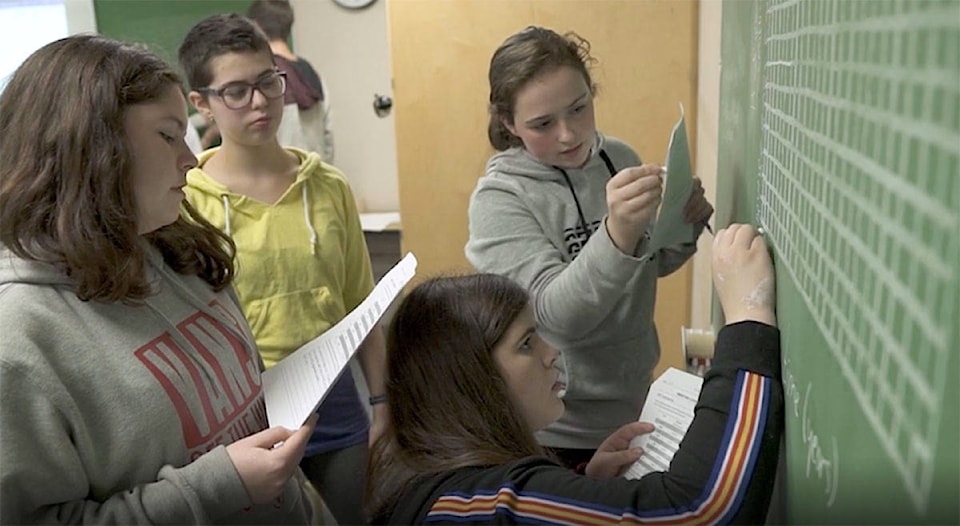When Highland math students took part in a 2019 project using data to predict disasters, they couldn’t have known how relevant disaster modeling would soon be.
No one could’ve had a pandemic on their mind, when the class, then in Grade 10, took part in a project through Open School BC called Focusing on Competencies in Math. The students are now in their Grade 12 year.
The Highland students worked on an assignment using data called “Predicting a Catastrophe,” along with a couple of other schools.
“Our students did such a great job,” says Highland teacher Becky Sulek, who was one of the teachers working with students.
The Open School BC project involved several schools from around the province working on different scenarios, such as salmon returns, playing with quadratics, communicating and representing math through trigonometry, and the beauty of math. Students worked with educators to create activities around math at the secondary school level. These also incorporated First People’s principles of learning and Indigenous worldviews as much as possible.
“They grabbed 12 math teachers from around the province, and we … talked about what we were going to build,” Sulek says.
A videographer was on hand to film the sessions to accompany the online resources, which includes class activities, teachers’ thoughts about designing the activities, and reflections from teachers and students about the activities.
“You could apply it to different activities,” she says. “You don’t have to do the one specific activity.”
In one of the videos, Sulek’s students discussed population numbers and food production, and how data can lead them to consider ideas such as food shortage, making choices about using graphs versus tables or how to interpret the data.
The work is now part of an online resource for teachers that was published this fall. The package includes an activity plan and handouts. It gives math teachers something they can assess other than a test, says Sulek, such as a student’s ability to communicate or reflect on their thinking. In the case of the disaster exercise, this focused on their ability to reason and model, but it also allowed them to delve into a humanities issue.
“The students were just so great about their ability to talk about what they were doing,” she says.
The teacher was confident in her class’s ability, which is why she had them take part in the project.
“I’m so proud of them in helping create this resource,” Sulek says.
It came about, in part, in response to the provincial government’s redesigned curriculum and graduation requirements in recent years. Sulek says it has been a little trickier redesigning the curriculum for math than for other subjects.
READ MORE: Highland Secondary student wins Horatio Alger scholarship
The point of the Open Schools BC project is to show the students in action and how math can be applied to different things – for example, using data to help predict disasters, which might take on added importance during a pandemic.
“It’s kind of cool because it’s so relevant now, with COVID … interpreting and making predictions,” she says. “We have all this data that we can now interpret and analyze and make predictions and consider if it’s reasonable … all important skills in math.”
For more, see https://www.openschool.bc.ca/competenciesmath/index.html
mike.chouinard@comoxvalleyrecord.com
Like us on Facebook and follow us on Twitter.
